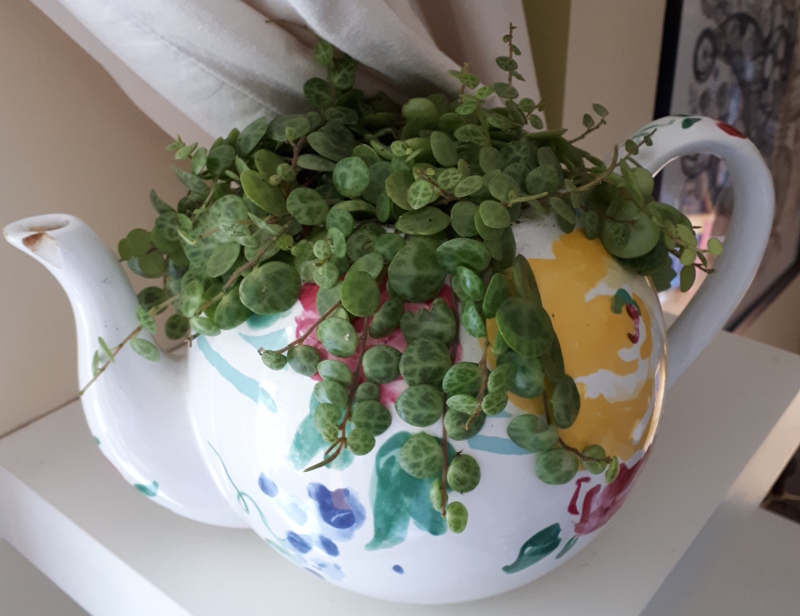Your mind may conjure a strange image when hearing the phrase ‘string of turtles’, but if you are an avid plant lover, then your thoughts will go immediately to a delightful vining, semi-succulent that looks like a little parade of turtles spilling out of its pot.
String of Turtles (peperomia prostrata) gets its common name from the round fleshy leaves it produces with variegated patterns resembling a turtle’s carapace. It is a native of the rain forests in Brazil but lives quite well indoors around the globe. For proper, vibrant growth keep temperatures consistent throughout the year at around 20 to 23 degrees Celsius. During the driest months of the summer and the long cold winter, mist a string of turtles to keep up the humidity or invest in a humidifier to keep plants comfortable.
Caring for a string of turtles differs from other succulents slightly so it’s important to understand their needs. A great place to start is with the soil. String of turtles needs a mixture higher in organic content than the regular cactus/succulent mix provides. Something with lots of peat works well since peat is acidic and the turtles prefer a more acidic pH level. Test the soil levels every so often to make sure the pH doesn’t get too low. A well-draining mix is also important to string of turtles care. Water deeply until it’s running through the drainage holes in the pot and then leave it until the top few centimetres are dry before watering again.
Light is another vital matter in string of turtles care. Direct sunlight will burn the leaves, so a bright indirect light is best, but too little and they won’t produce any new growth. Make sure the top of the plant receives the light and not just the vines. The whole plant must receive light to function properly.
The string of turtles is a slow growing plant that reaches maturity within three to five years, after which it will begin to die off. It benefits from a diluted, liquid fertilizer every other week during the spring and summer months but avoid feeding in fall and winter when it goes dormant. Pruning will help keep the plant looking healthy and encourage new growth.
For an indoor garden to keep things interesting, add a string of turtles to your collection and enjoy the flora mixing with the fauna.












